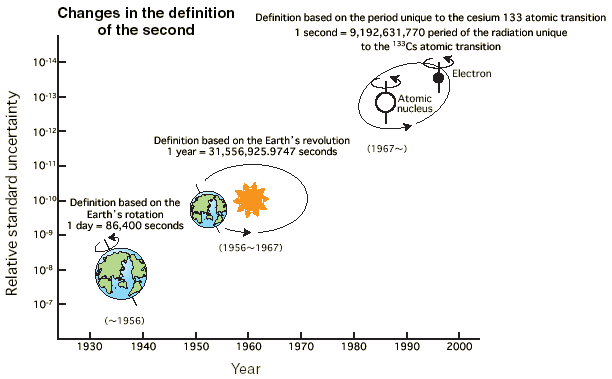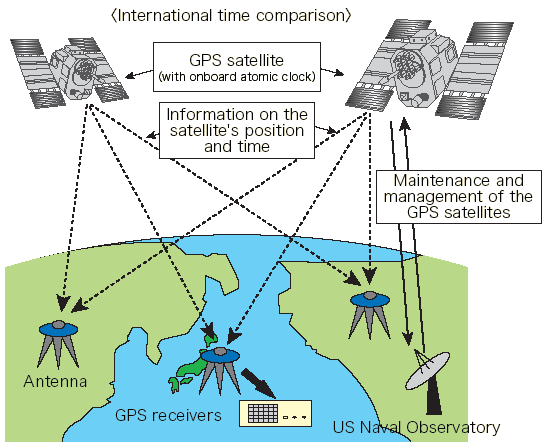Standards for the SI Base Units - Time
The Evolution of the Definition of the Second
The original definition of the unit of time, the second, was based on the rotation of the Earth. Since the Earth's rotation was subject to seasonal and longitudinal variations, the definition was replaced in 1956 by the one based on the revolution of the Earth. Thereafter, research on an atomic frequency standard based on the cesium atom proceeded, which could realize a time interval much more precisely. The definition of the second based on the cesium atom was eventually adopted at the 13th International Conference of Weights and Measures held in 1967.

International Time Comparison and Timekeeping
In order to keep time accurately, each country conducts international time comparison by various methods using radio signals. They send the results of the comparisons to the International Bureau of Weights and Measures (BIPM), and International Atomic Time (TAI) is calculated based on those results. At NMIJ, time comparison is made to an accuracy of 1/100 millionth of a second (within 10 ns) using GPS satellites, thereby contributing to the generation of TAI.

